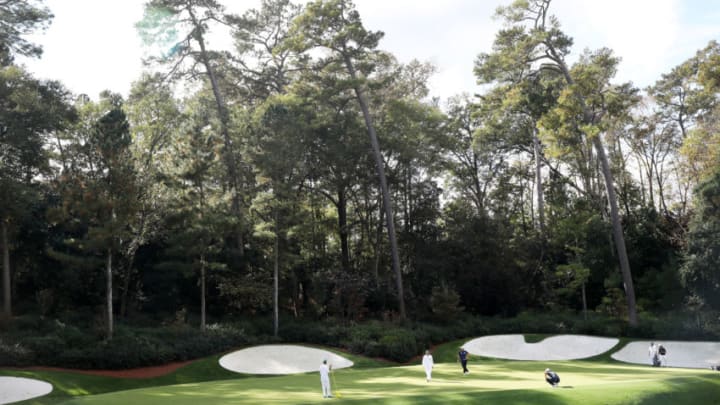Two things most people who watched the Masters noticed, aside from Bryson DeChambeau, were the slow greens and the slow fairways. Everyone blamed the rain, but was it the real culprit?
After watching golf ball after golf ball hit the greens at Augusta National Golf Club and just plain stop like they were having a Velcro experience.
After watching golf balls hit severely downhill fairways and stop.
After watching golf balls land on the slopes of the 15th green and not roll into the water, or on an angle on the 6th green and stay there, I asked myself what the heck was going on. This has never happened. It just plain didn’t make sense.
We all know this, because we have all watched the Masters for years or decades or whatever, depending on our ages.
In past years, various announcers have said landing a ball on the greens was like trying to get it to stop on the top of a Volkswagen Beetle. In other words, the greens are usually unhittable, unholdable and generally ruthless enough to make grown men cry. That’s before anybody hits a putt.
Putting is typically more treacherous. We all know that the greens at Augusta National are the usually equal to speed of rolling a ball on smooth concrete.
If the golf ball lands on the green, you just blow on it, and it will roll 20 feet, off the green, into a hazard or down a hill.
But not in 2020.
More from Courses
- Kyle Berkshire: What Was on His Mind before Winning The World Long Drive
- 5 Facts About the 2023 U.S. Mid-Am Championship
- 2023 BMW Championship: Olympia Fields Rundown, Top DraftKings Plays
- The Rundown: 2023 FedEx St. Jude Championship
- The Rundown: 2023 Wyndham Championship at Sedgefield CC
Instead of balls rolling to the hole and continuing another six to 12 feet, or even rolling off the green, balls sometimes stopped before they got to the hole. It’s not like that has never happened, but you could probably count the times on two hands, and all of them were probably last week.
Usually on a downhill hole, the golf ball inertia will generate some roll down the fairway. Balls usually carom down the 2nd, 9th and 10th, unimpeded. This year, not so much. Sometimes they hit and almost plugged.
And the “second cut?” Golf balls disappeared in it. Maybe that’s a new “tradition,” but there may be other issues at work.
After watching the course do many unnatural things, I came to one conclusion. It wasn’t about November. There’s plenty of golf played in November on overseeded grass. Think Las Vegas. Or in the old schedule, the Tour Championship.
It wasn’t about the rain. It has rained often at the Masters.
It was about next April. You know, when the 2021 Masters will be held.
And it was about the opening of play at Augusta National Golf Club, which – we are told– is closed from May through October. In other words, the member season has just started.
In order to open for the winter and to hold the Masters in April, the Bermuda base at Augusta National has to be shaved down and overseeded with rye grass. The overseed has to be started in September or October because the seed won’t germinate if the nighttime temperatures are too low. If temperatures dip below a certain point, an early frost, for instance, it could kill the grass. Nobody wants that.
It comes down to this: If there’s no proper overseeding in the fall, then there is NO GRASS at Augusta National Golf Club for the members in the winter months and NO GRASS for the Masters in April. No one was going to take a chance on that.
So, the club must have made the decision that if the greens are a little soft, and if the fairways don’t have their usual runout, well so be it. It’s better to have a slower golf course in November than NO GRASS for the rest of the winter and NO GRASS for the second week in April of 2021.
Of course, this is just idle speculation on my part. But there has to be a reason that the course played the way it did, and this is the only thing that makes sense.
